Next: Biasing Up: ch4 Previous: DC Operating Point
The common-emitter transistor circuit is commonly used for voltage
amplification, as shown in the example below. Here we assume



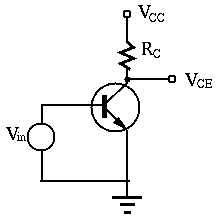
The current and voltage on both input and output sides can be obtained either algebraically or graphically as shown below.
The input voltage and current
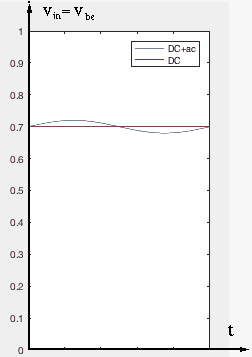
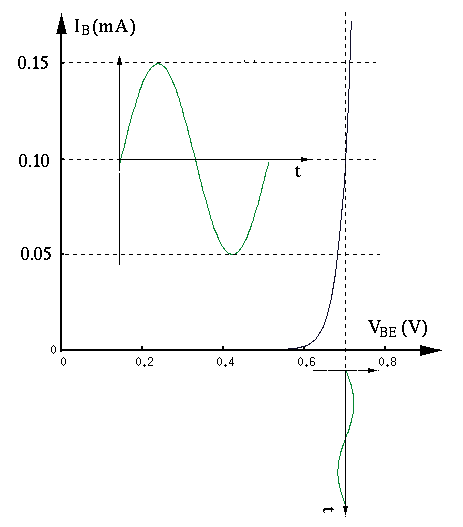
Assuming the transistor is properly biased so that




 |
(22) |
Due to the small dynamic range (

 |
(23) |
 can be approximated to be
can be approximated to be
 |
(24) |
 and
an AC component with an amplitude
and
an AC component with an amplitude  .
.
Why can't we get the base current in the following way?
 |
(25) |
The output voltage and current
The load line is the plot of equation

 and and |
(26) |
 :
:
 |
(27) |
 |
(28) |
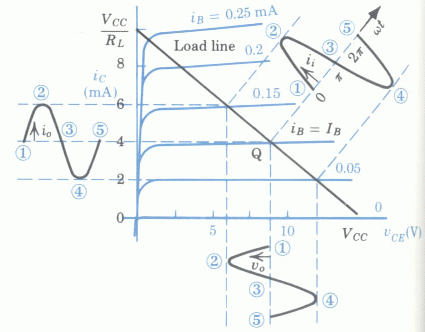
Comparing the AC sinusoidal component






Waveform distortion
The waveform of the output 


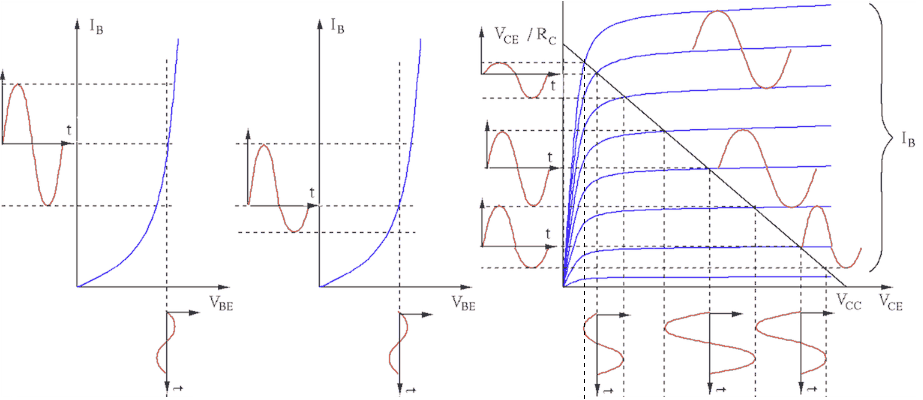
We see that severe distortion in output 
 needs to be large enough to avoid distortion due to the
nonlinearity of the input characteristics (close to the cutoff region);
needs to be large enough to avoid distortion due to the
nonlinearity of the input characteristics (close to the cutoff region);
 and thereby
and thereby
 need to be small enough to avoid
distortion due to the nonlinearity of the output characteristics (close
to the saturation region).
need to be small enough to avoid
distortion due to the nonlinearity of the output characteristics (close
to the saturation region).
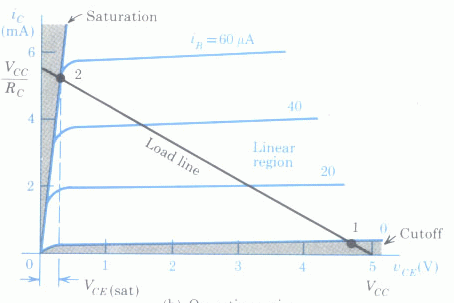
Example
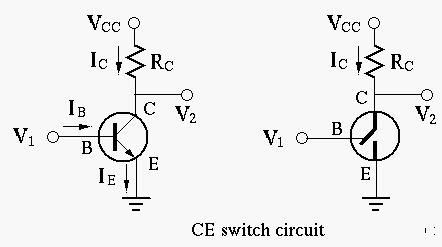
Assume






 , the forward bias of BE PN-junction is insufficient
for it to conduct current, we have
, the forward bias of BE PN-junction is insufficient
for it to conduct current, we have  ,
,
 ,
,
 . The transistor is cutoff (the switch is
open or open-circuit).
. The transistor is cutoff (the switch is
open or open-circuit).
 , the BE PN-junction is forward biased, we can find
, the BE PN-junction is forward biased, we can find  from the input characteristics, here assumed to be
from the input characteristics, here assumed to be  , and get
, and get
 and
and
 .
The transistor is in linear region.
.
The transistor is in linear region.
 , the BE junction is forward biased, we can find
, the BE junction is forward biased, we can find  from the input characteristics, here assumed to be
from the input characteristics, here assumed to be  . If the linear
relationship
. If the linear
relationship
 were to hold, we would get
were to hold, we would get
 and
and
 .
This result is obviously wrong, indicating that the transistor is actually
in the saturation region (the switch is closed or short-circuit),
i.e., the linear relation
.
This result is obviously wrong, indicating that the transistor is actually
in the saturation region (the switch is closed or short-circuit),
i.e., the linear relation
 does not hold. In fact, it is
impossible for the transistor to draw
does not hold. In fact, it is
impossible for the transistor to draw
 from the voltage source,
as the maximum current is
from the voltage source,
as the maximum current is
 when
when
 . In this case, the actual
. In this case, the actual  can be approximated on the output
characteristics to be about
can be approximated on the output
characteristics to be about  , the intersection of load line and the
curve corresponding to
, the intersection of load line and the
curve corresponding to
 ), and
), and
 .
.
 is only valid when the transistor is in the linear region.
is only valid when the transistor is in the linear region.